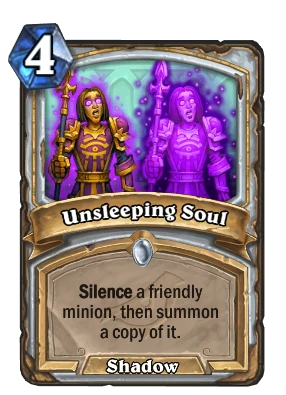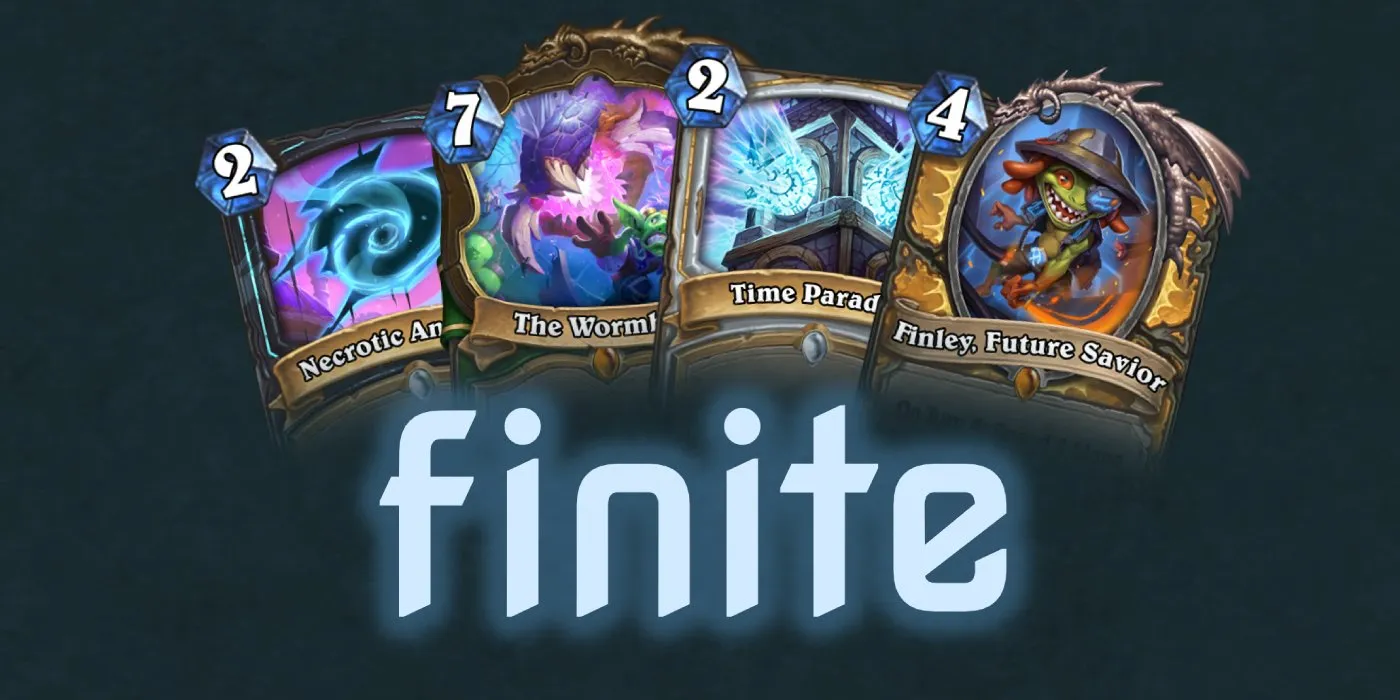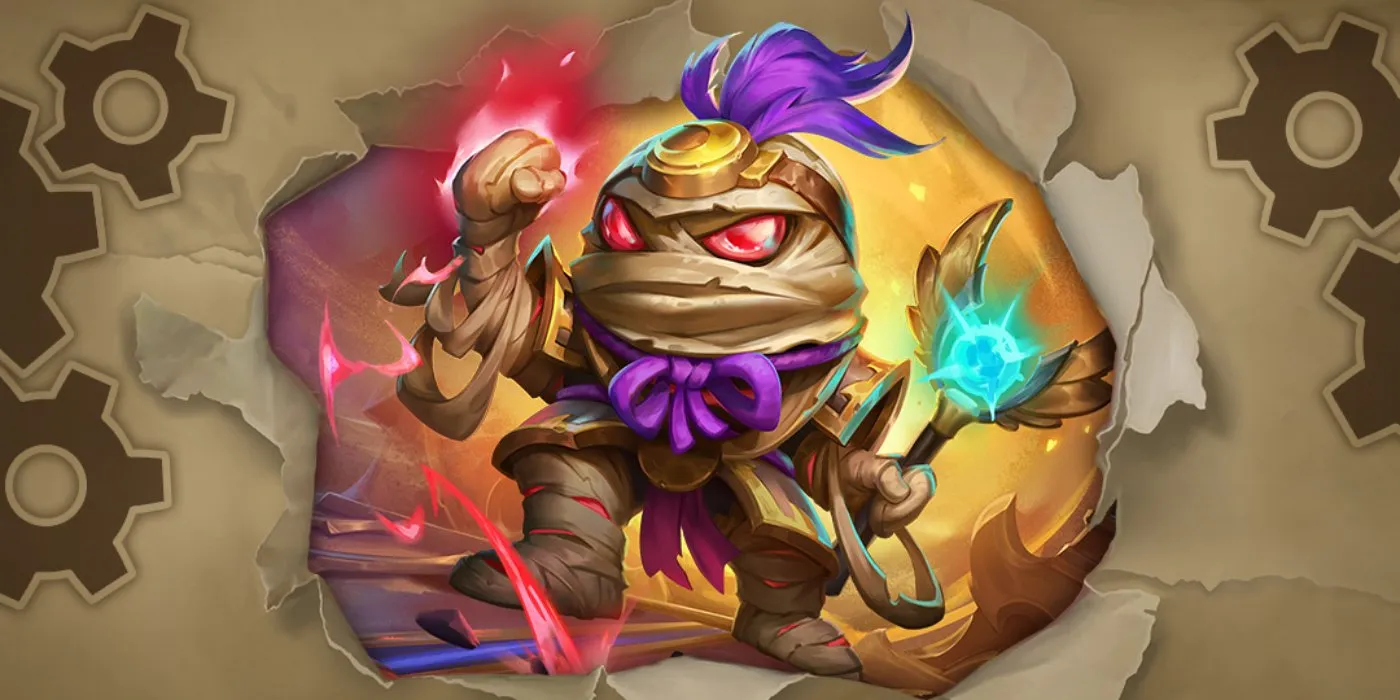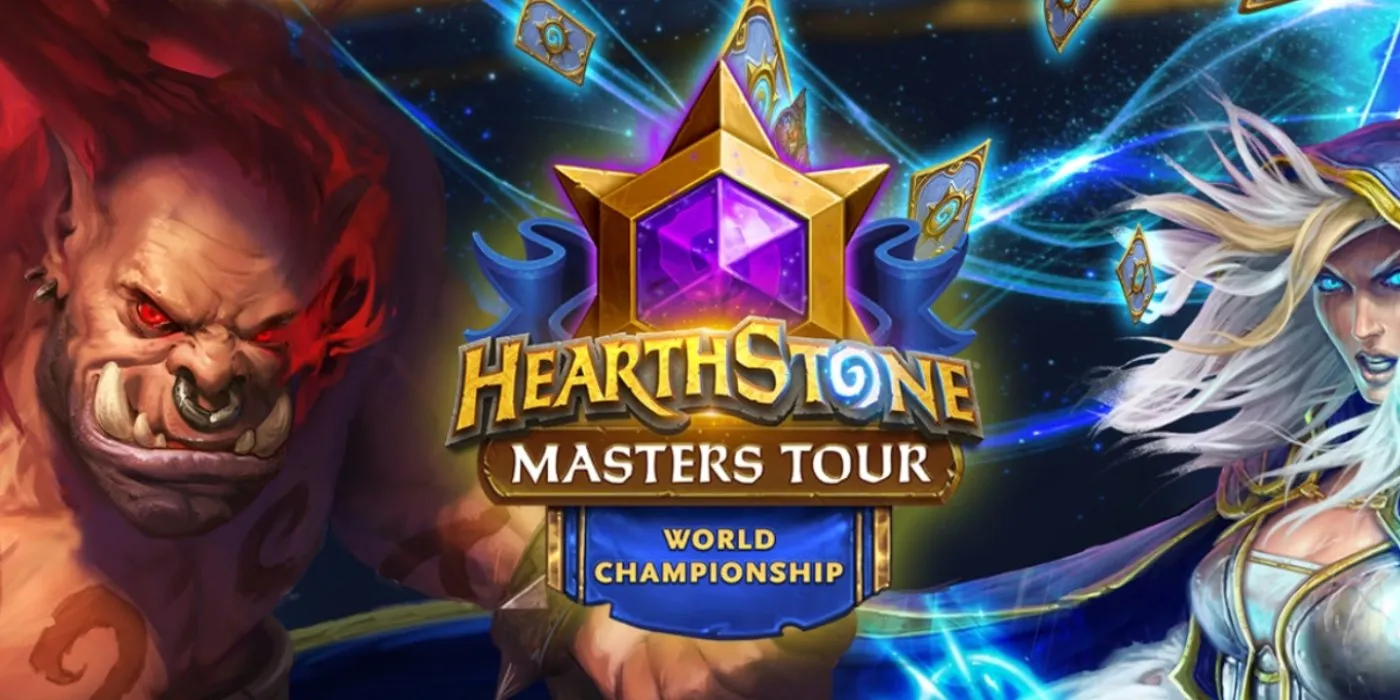Hello.
Hello all, and welcome back to another edition of Meta Breaker. In this weekly series, I tackle the current Standard metagame and build a deck that tries to take down the meta’s boogeymen. Here’s what you can expect from each week’s column:
- Analyzing the current meta and choosing what deck(s) we’d like to target.
- Assessing the strong and weak points of our target(s).
- Identifying cards and strategies that may prove effective against our target(s).
- Building an initial version of our deck and trying it out against the field.
- Continually refining the decklist using observations and statistics taken from test games.
Not gonna lie- Standard hasn’t changed much since last week. I won’t go so far as to use the word stale, but the same three decks remain at the top of Tier 1- Highlander Hunter, Highlander Paladin, and Murloc Shaman. The reason I wouldn’t use the word stale is that although these decks are all quite strong and well-represented, there is actually a huge variety of Tier 2 decks floating around, and many of them are quite viable. As a result, I personally am willing to say this is one of the better late-stage metas we’ve had in a long time. But I digress. Let’s take another look at the three strongest decks:
Regina, Gretchen, Karen
These 3 decks are the Mean Girls of the meta- sure, there are a bunch of other decks hanging out in the cafeteria, but when it comes down to it, you know who has real power in the ecosystem. What we need to do is build our own Cady Heron, who’s cool enough to hang with the plastics and take them down from the inside. (Apologies for the terrible metaphor.)
I wrote a section last week on how to counter 3 decks at once, and since we’re working with the same 3 decks, I’m gonna go ahead and copy-paste the same passage for your convenience:
Now when you’re building a deck that counters multiple different archetypes, here are the main questions you want to ask yourself:
- How similar are their gameplans? There’s likely to be some overlap in gameplans between at least some of the decks. It’s pretty clear why this is important- the more similar they are, the more susceptible they are to being weak to a single strategy.
- Any specific card overlap? This is usually gonna be limited to neutral cards unless you have a meta with one class having multiple tier 1 decks. Still, if there are certain neutral cards that are seeing play in multiple different strategies, it’s helpful to note which ones those are and make sure your deck has a plan to deal with them.
- Which decks punish bad matchups the most? What I mean by this is- let’s say we’re playing in Un’Goro meta before the nerf of The Caverns Below, and Quest Rogue is on the list of decks you’d like to beat. Well back then, the only real way to beat Quest Rogue was to rush them down before they completed the quest, and if your deck wasn’t fast enough to do that, the matchup was pretty much an auto-loss. This means that in this scenario, you’d prioritize Quest Rogue over your other matchups and make sure you at least have a fighting chance. In general, we want to build towards the most polarizing matchups first to ensure we get decent matchups across the board.
So let’s see how these questions stack up against our current cast of enemy decks:
- How similar are their gameplans? Quite similar, actually. All three decks have low curves and aggressive, curve-oriented gameplans. Murloc Shaman, in particular, is one of the most aggressive decks in the meta. Hunter and Paladin are both Highlander decks but still, aim to close out the game by turn 7 or 8.
- Any specific card overlap? Not much, besides staples. Hunter and Paladin are both Highlander and thus have Zephrys, but besides that, they only share some staple neutral legendaries like [Hearthstone Card (SN1P-SNAP) Not Found] and Zilliax.
- Which decks punish bad matchups the most? I think it’s pretty clearly Murloc Shaman here. If you don’t have a good enough early game to keep their swarm under control, you’ll die to Bloodlust before you get your foot in the door. Luckily, we also want to focus on the early game vs. the other two decks as well, so prepping for Murloc Shaman won’t be a huge sacrifice in the other matchups.
A New Direction
Last week we tackled the problem using a Quest Warrior build that snowballed early board control. It went okay against the overall field, but I think we might benefit by trying a different approach. I still think that early board presence is key to beating these strategies, but instead of trying to fight them on the board, we may be more successful in trying to race. Let me show you what I mean.
Nobody’s been playing Silence Priest for a while- why is that? It's most likely due to the other tools Priest received in Uldum, as well as the metagame shift. However, the archetype’s still got more or less the same tools as it did when Rise of Shadows came out. Not only that, the meta is in a prime spot for it right now. Let’s take a look at how the list comes together:
Big Chonkers
- 2 Ancient Watcher - People have been finding ways to abuse this guy since the game’s inception. These days there are lots of things you can do with him- Silence him, copy his stats, give him Taunt, etc. We pretty much always want him in our opening hand if we can help it since we have plenty of ways to make him relevant.
- 2 Arcane Watcher - Plays pretty much the exact same role as Ancient Watcher. Having 4 Watchers does a lot to help make our draws more consistent. Most hands you’re gonna want to hard-mulligan for at least one Watcher because the rest of the deck’s cards are pretty reliant on them.
- 2 Hench-Clan Shadequill - This card’s fallen off the map a bit due to the resurrect-style nature of Priest this expansion, but he’s still an efficient beater that happens to like to be silenced. I’d say the only Silences you put on this guy are Librarian and Unsleeping Soul, but this card’s still more than serviceable by itself.
- 2 Saronite Taskmaster - This guy isn’t usually included in Silence Priest, but against the Big Three, we want a cheap 1-drop that can contest their early plays, and having this incidentally get Silenced by a Librarian means we can also negate the downside.
- 2 Mortuary Machine - I am wary about this guy as the drawback is severe- however, combining him with Silence on turn 5 gives us a straight up 5 mana 8/8, and goes well in a playstyle where we just throw everything at our opponent and hope they don’t have an answer.
Enablers
- 2 Unsleeping Soul - This card was, of course, designed for this archetype. Landing this on a Watcher on turn 4 leads to a massive tempo swing, and you usually just want to go face after that to capitalize.
- 2 Dalaran Librarian - Pretty much a no-brainer. Being able to silence 2 big minions at once is great, and it’s also attached to a reasonable body.
- 2 Silence - We’re essentially spending an extra card to get an undercosted minion. I think in this meta, this is often worth it since we’re building our deck to try and race the Tier 1 decks. In a different meta with more control decks, this card might not be worth running, but then again, this deck might not be worth running in that meta either.
- 2 Faceless Rager - Following up a Watcher with this guy allows for yet another big, undercosted minion. With the coin and an Arcane Watcher we can have 2 5/6s on turn 3. That should hopefully lead to a snowball win against any of the Big Three.
- 2 Sunfury Protector - Sometimes you won’t be lucky enough to draw a Silence effect early on, in which case you’ll have to settle for giving your big guy Taunt and forcing your opponent to attack into it. This will hopefully be good enough to stall for a turn or two. Can also run this out on an empty board as a 2-drop in a pinch.
Odds and Ends
- 2 Divine Spirit - Hmm… we’re an aggressive Priest deck… that runs cheap minions with high Health… I wonder what this card could be used for?
- 2 Inner Fire - Just in case you’re not familiar with the combo, Divine Spirit + Inner Fire allows us to send in for huge burst damage off the back of one of our high-Health minions to finish the game.
- 1 Spellbreaker - Having 1 more Silence effect is nice, and he also has an efficient body and can Silence annoying Taunts and the like.
- 2 Northshire Cleric - Having another 1-drop to interact early is great, and this one can also be a source of card draw.
- 1 Neferset Ritualist - Kind of a situational tech card, so only 1 copy, but can help if we’re playing a midrange trade game. Given how huge our minions are, there’s a lot of potential for massive Health swings with this card in the right situation.
- 1 Mossy Horror - This guy’s a bit of a tech inclusion, but he’s very strong against Shaman and Paladin while also having a high enough Health to synergize with the rest of our deck.
- 1 Ragnaros the Firelord - Great top-end card on its own. Can also Silence it and go face, which should lead to some surprised opponents.
Let’s see what the completed list looks like:
Testing
A quick note on testing: in an ideal world, I would absolutely do some specific matchup testing against the decks of choice. Unfortunately, I’ve been in the middle of my midterm exam season the past couple weeks, and I haven’t had as much time to do as much testing as I’d like. Now that I’ve finished my last midterm exam this morning (pog), my hope is that I can improve the quality of my testing again starting next week.
For this week, though, I played 10 games on the Standard ladder:

I posted a 60% winrate against the field, which is alright but not great. A lot of my wins were very close as well. Another awkward thing is that I only met a Tier 1 deck twice (Highlander Hunter), but I guess that speaks somewhat to the diversity of the ladder? Here are some thoughts on the deck:
- Hands are polarizing. Some games where you draw everything you need the game’s just over, and some games you draw no Watchers or no Silences and you have a bunch of silly cards that do nothing by themselves. This is just kind of the nature of the deck, and doesn’t necessarily mean it’s bad- it just depends on how often you get the former versus the latter.
- Some cards are polarizing from game to game. I honestly have no idea how I feel about Mortuary Machine. There were games where I just ran people over with a turn-5 Machine, and there were games that I felt I couldn’t play it at all without a Silence for fear it would randomly lose me the game. I think in this meta, at least, it’s probably still worth running, but in some other metas, I could easily see this card being a liability.
- That being said, I think the deck’s core is mostly fine. It’s hard to see how many changes are possible, really. Most of the cards that want to go in this deck are very specific.
That being said, here are some potential ways to go with this deck:
- -1 Sunfury Protector, -1 Neferset Ritualist, -2 Mortuary Machine, +2 Power Word: Shield, +2 Beaming Sidekick: Making the deck more similar to Combo Priest and just going all-in on finishing people off with massive amounts of damage.
- -1 Mossy Horror, -2 Sunfury Protector, -1 Neferset Ritualist, +2 Grandmummy, +2 [Hearthstone Card (Evil Conscriptor) Not Found]: On the other hand, we can compensate for the deck’s inconsistency by including some 2-drops that we can more reliably play on turn 2.
That’s it for this week’s Meta Breaker! What did you think of today’s deck, and what changes would you make? Any exciting Standard lists you’d like to share? Let us know in the comments!






Comments
Cool read.. I actaully want to make this work but its tricky
I played both this version, and a previous one that Aliestrasza played in early RoS. One thing that I am absolutely sure of is that this needs more draw.
I would suggest you throw in Acolyte of Pain, Pyromancer and 2 PW: Shield.
It will help you with the draw, and will also help keep board against really aggresive decks (IMO Mossy is too damn slow for that).
Seems like an interesting idea to try. In which rank you tested the deck?
I think that Mortuary Machine is too demanding, 0-mana Silence would probably be spent until turn 5, and the deck doesn't have much draw. The other ways of silencing it means it's coming too late and losing its impact, so I would definitely cut it.
I forgot Silence Priest exist, gotta go back to my lab i guess..!!